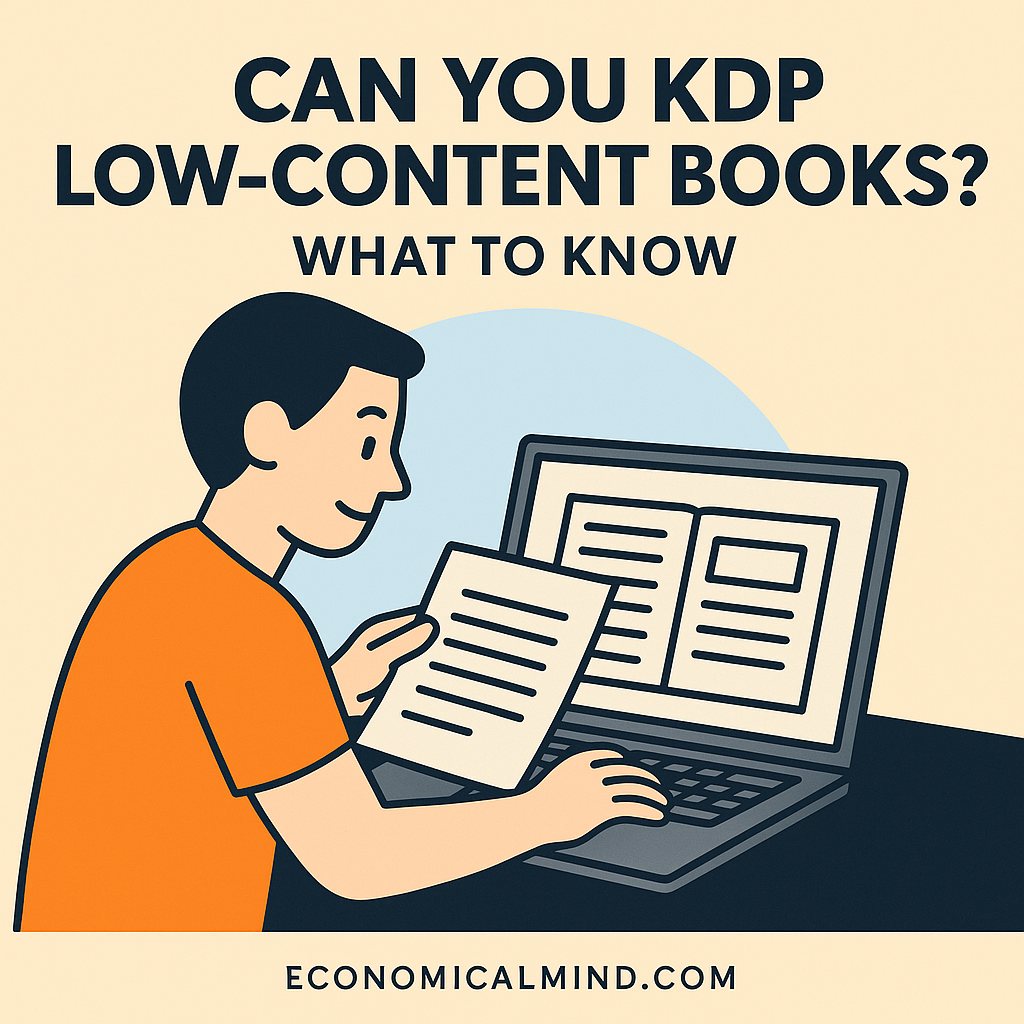
Selling low-content books on Amazon KDP (Kindle Direct Publishing) is one of the easiest ways to earn passive income online. You don’t need to be an author — just creative and consistent. But to succeed, it’s important to understand what KDP low-content books are, how they work, and the best practices to stand out.
What Are KDP Low-Content Books?
Low-content books are simple books with minimal or repetitive interior pages. They typically include lined pages, prompts, or templates that buyers fill out themselves. You upload the design once, and Amazon prints and ships each order on demand — no inventory or upfront costs.
Common Examples:
- Journals and notebooks
- Planners and calendars
- Coloring books
- Logbooks (fitness, meal, reading)
- Prompt or gratitude journals
How Amazon KDP Works
- Create your interior pages (using Canva, Affinity, or Adobe tools).
- Design an eye-catching cover.
- Upload your files to Amazon KDP.
- Set your price and royalties.
- Amazon handles printing, shipping, and customer service — you earn passive income each time someone buys your book.
Pros of KDP Low-Content Books
1. Low Startup Costs
You can start free — all you need is creativity and time.
Example: Many sellers launch with just Canva templates and basic design skills.
2. Passive Income
Once published, your books can sell indefinitely without further work.
3. No Inventory or Shipping
Amazon handles production and delivery, so you can focus on design and marketing.
4. Creative Flexibility
You can target specific niches like productivity, gratitude, fitness, or education.
5. Easy to Scale
Create multiple books across categories to grow your portfolio.
Cons of KDP Low-Content Books
1. High Competition
It’s a popular side hustle, meaning you’ll need strong designs and keywords to stand out.
Fix: Use niche research tools like BookBolt or Publisher Rocket.
2. Time-Intensive at First
Designing interiors and covers takes effort upfront.
Fix: Reuse templates and batch your creations.
3. Variable Income
Sales fluctuate by season — planners sell best near year-end, for instance.
Fix: Diversify your book types across multiple niches.
4. Limited Branding Options
Amazon controls much of the customer experience.
Fix: Create a consistent author brand and recognizable style.
5. Possible Rejections
Amazon enforces content guidelines — low-quality uploads may get flagged.
Fix: Follow KDP’s publishing rules carefully and maintain originality.
Best Practices for Succeeding with KDP Low-Content Books
1. Start with Niche Research
Find specific audiences like “nurse planners” or “teacher gratitude journals.” The more focused, the better.
2. Design High-Quality Interiors
Make sure your layouts are clean, consistent, and user-friendly.
3. Create Attractive Covers
Your cover is what sells — use bold typography and relevant imagery.
4. Use the Right Keywords
Research and include search-friendly terms in your title, subtitle, and backend keywords.
5. Optimize Pricing
Start competitively, then adjust as reviews and sales increase.
6. Test and Iterate
Track which books perform best and create similar variations.
7. Upload Consistently
Publishing multiple books increases your visibility and royalty potential.
8. Offer Series or Bundles
Build a collection under the same brand — like “Mindful Living Journals.”
9. Promote on Social Media or Pinterest
External traffic can boost sales rankings.
10. Treat It Like a Business
Track royalties, expenses, and niches that generate steady returns.
Key Takeaway
KDP low-content books are one of the most accessible passive income ideas today. With creativity, consistency, and niche focus, you can build a library of products that earn while you sleep.
